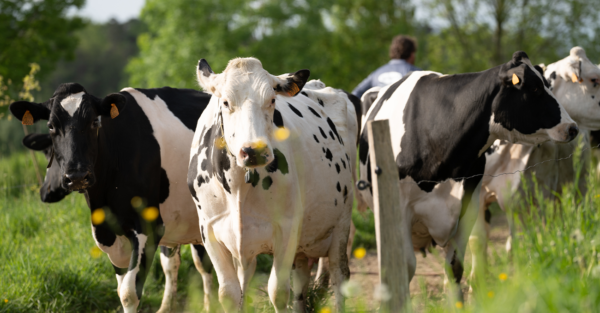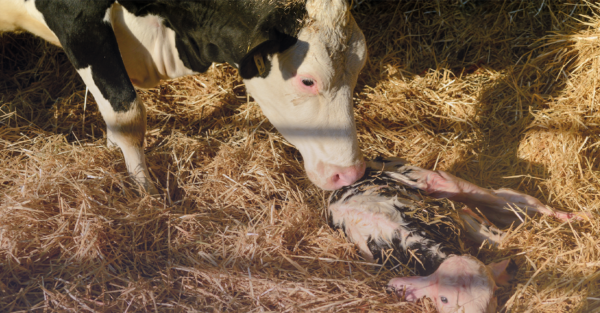Blog | Reading Time 7 minutes
How beef cattle cope with heat stress: Producers are finding solutions through nutrition, management
Heat stress can disrupt average daily gain (ADG) in beef cattle, but new tools are available to help nutritionists and farmers around the world estimate losses — and take steps to regain production. Plus, recent research investigates the specific critical temperature for beef cattle linked to heat stress and mortality. It appears that some breeds need specific management to better cope with such challenges.
Why is heat stress such an issue in beef cattle?
Cattle live with a heat-producing engine inside their body: their rumen. A rumen generates heat from fermentation. In addition, the ability of cattle to sweat is limited and only about 10% of an average human’s capacity to perspire. The main way cattle regulate their internal temperature is through panting. This is also why observation of respiration rate is an easy way to detect visible signs of heat stress.
Other factors can modulate the severity of heat stress such as coat color, hair length, and degree of fat covering (Horner, 2015). Beef cattle in the finishing period can experience more severe heat stress because of their fat covering, which acts like insulation.
New data on critical temperatures for beef cattle
Comparing different studies conducted in different countries — France and Italy — shows cattle are able to adapt to the normal climate of the region. Interestingly, cattle coming from France were better adapted to lower temperatures than cattle from Italy, which is further South.
Researchers from France (Morignat et al., 2015) show that elevated temperatures (every 1° above the thermoneutral zone) increase the risk of mortality between 4.4 and 5.6%. These results were confirmed by other authors. Studies with dairy cattle show that herd size, breed, and age have no effect on THI-related mortality (Crescio et al., 2010).
The ability to cope with heat is related to the usual thermoneutral temperature of beef cattle but also to the usual climate of the region. As producers are facing more hot periods, they need to find solutions and mitigate the consequences when the temperatures reach unusual levels.
Reducing the heat burden can be accomplished through barn design, shade provisions, fans to circulate air, and maintaining an adequate water supply. Farm managers can also look at nutritional approaches to mitigate effects on performance, including using microbial-based solutions that have been proven effective in beef cattle.
Practical tips to reduce heat stress in beef cattle:
- Barn design and cooling strategies
- Ventilation: everywhere in the barn (above cubicles and feed bunk)/sprinklers
- No grazing during the warmest periods of the day
- Fresh, clear, and easily accessible drinking water (10% of the herd can drink at the same time)
- Nutrition
- Fresh/palatable diets
- Easily digestible feed (quality forage)
- Increase the energy content of the diet but avoid drastic changes
- Support antioxidant status
- Prevent rumen acidosis with increased buffer capacity
- Improve feeding behavior: chewing/rumination time with increased meal frequency
- Planning work
- Rest
- No action at hot periods
- Feed just before cooler periods and push up the feed more often
- Avoid any stress/handling
Nutritional aids to mitigate heat stress
Elevated temperatures trigger cortisol secretion, which is known as the stress hormone. Scientists have shown that heat stress in cattle can affect innate immunity, disrupt inflammatory patterns, and affect antioxidant capacity (Li et al., 2021). Nutrition can help balance the antioxidant capacity, reduce inflammation, and improve digestive discomfort.
1. Maintaining antioxidant balance
Supplementing the appropriate quality and quantity of antioxidants can help animals better cope with heat stress and rebalance their antioxidant capacity. Feeding a specific antioxidant with a high level of bioavailability — such as selenium-enriched yeast (ALKOSEL) — and a supplement rich in superoxide dismutase (SOD) (MELOFEED) under a high heat stress environment was shown to:
- Improve antioxidant capacity (Niwinska and Andrejewski, 2017; Lallemand Animal Nutrition internal data, 2020),
- Alleviate weight gain losses: + 5.8 Kg of gain after 28 days of supplementation (Figure 1).

Figure 1: Effect of MELOFEED + ALKOSEL supplementation on bulls during heat stress periods on total weight gain (Lallemand Animal Nutrition internal data. 2016. Commercial farm, France)
2. Live yeast for improved rumen function under stress
Nutrition can also help reduce inflammation and limit digestive stress. In 2020, Perdomo et al. showed that the live yeast S. cerevisiae CNCM I-1077, fed at a specific heat stress dosage (20×109 CFU/head/day), reduces signs of inflammation with less inflammatory compounds found in blood samples (Figure 2).
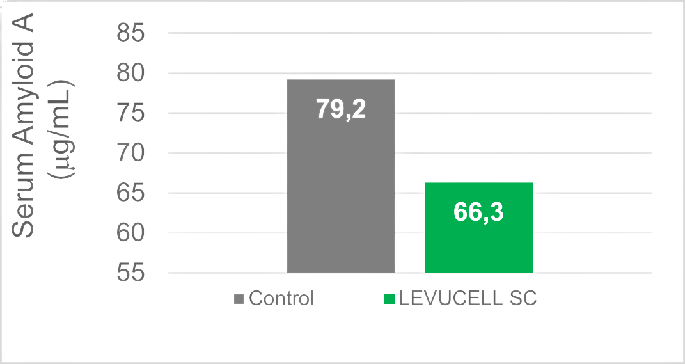
Figure 2: Effect of live yeast supplementation during heat stress period on Serum Amyloid A (blood inflammation biomarker) (From Perdomo et al., 2020).
This study also shows improvement of visible signs, such as rumination behavior that can be linked to improved digestive welfare.
Another study conducted in Italy (2015) on a commercial farm with Charolais cattle showed a 5% increase in ADG under a THI around 70 when the animals received S. cerevisiae CNCM I-1077 as compared to controls.
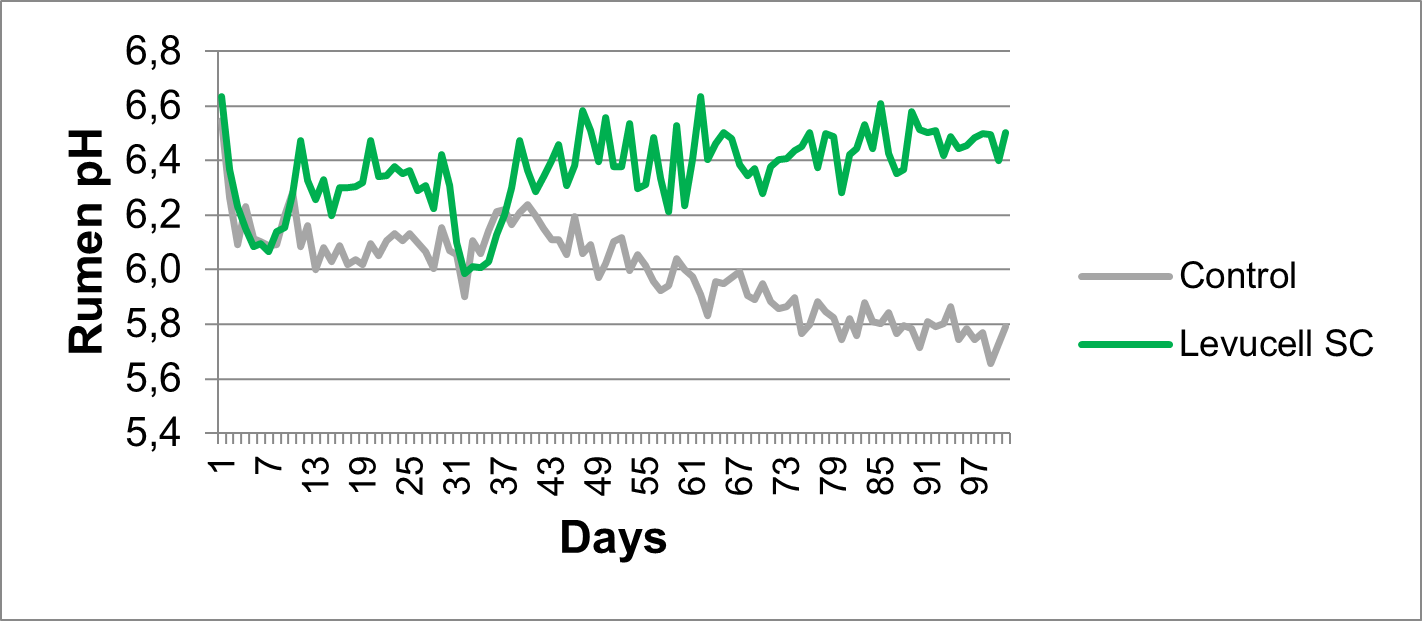 Moreover, this study used a pH bolus system, which allows the measurement of the ruminal pH in real time. It confirmed that rumen pH decreases in conditions of heat stress (Fig. 3) and is linked to strong variations in feed intake and loss of saliva buffering capacity (panting).
Moreover, this study used a pH bolus system, which allows the measurement of the ruminal pH in real time. It confirmed that rumen pH decreases in conditions of heat stress (Fig. 3) and is linked to strong variations in feed intake and loss of saliva buffering capacity (panting).
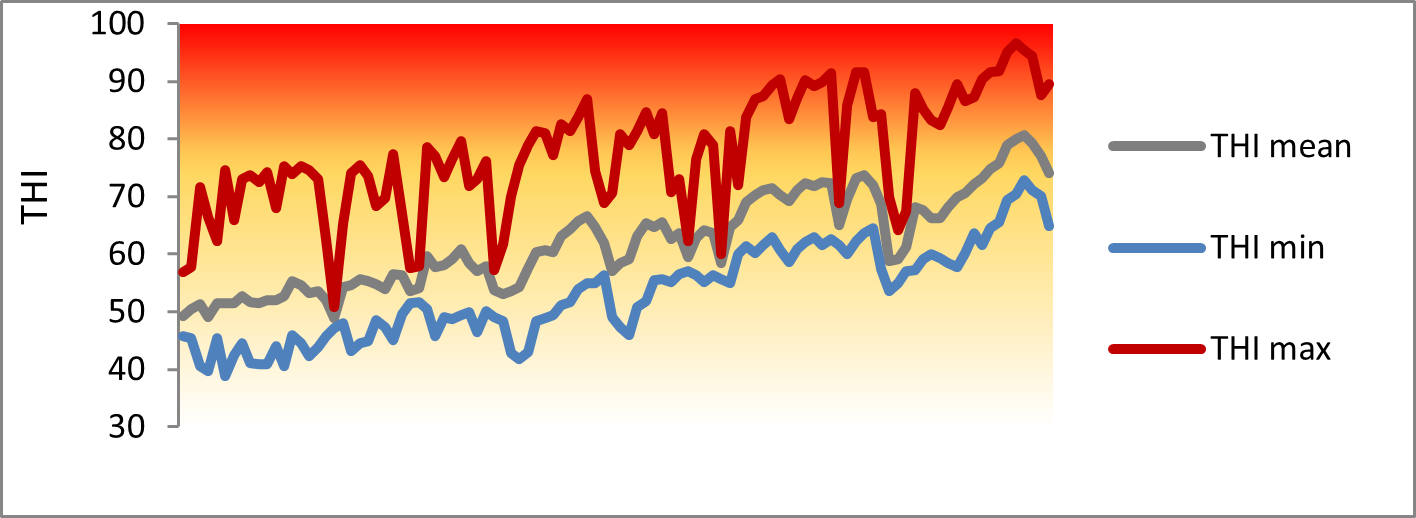
Figure 3 Top Effect of LEVUCELL SC on rumen pH variations. Bottom Variations of the temperature-humidity index (THI) for the same period (Italy, 2015).
S. cerevisiae CNCM I-1077, LEVUCELL SC, helps stabilize the rumen pH, especially when the animal is under heat stress conditions.
 Did you know?
Did you know?
The Wagyu paradox
Wagyu cattle, thanks to their soft, elastic, and fine hair — in addition to naturally lower cortisol levels compared to other breeds — are better prepared to deal with elevated temperatures.
Most Wagyu cattle will be impacted by temperatures above 23.8°C (75°F) with a THI around 80 (versus 72 for other breeds, according to Saint-Pierre et al., 2003). In addition, specific Japanese Wagyu breeds (Japanese Brown Wagyu, Akaushi, etc.) seem to tolerate slightly more elevated temperatures than the black Wagyu. Nevertheless, Wagyu cattle should experience less stress to guarantee their meat quality and to tolerate the longer finishing period compared to other breeds (Horner, 2015).
Lallemand Animal Nutrition provides a complete range of microbial-based natural solutions. Based on practical on-farm visits and expertise, experts will assess your situation and will propose a specific program. Discover the Lallemand Heat Stress program.
REFERENCES
Published May 25, 2023 | Updated Jun 4, 2023
Related articles
Need specific information?
Talk to an expert